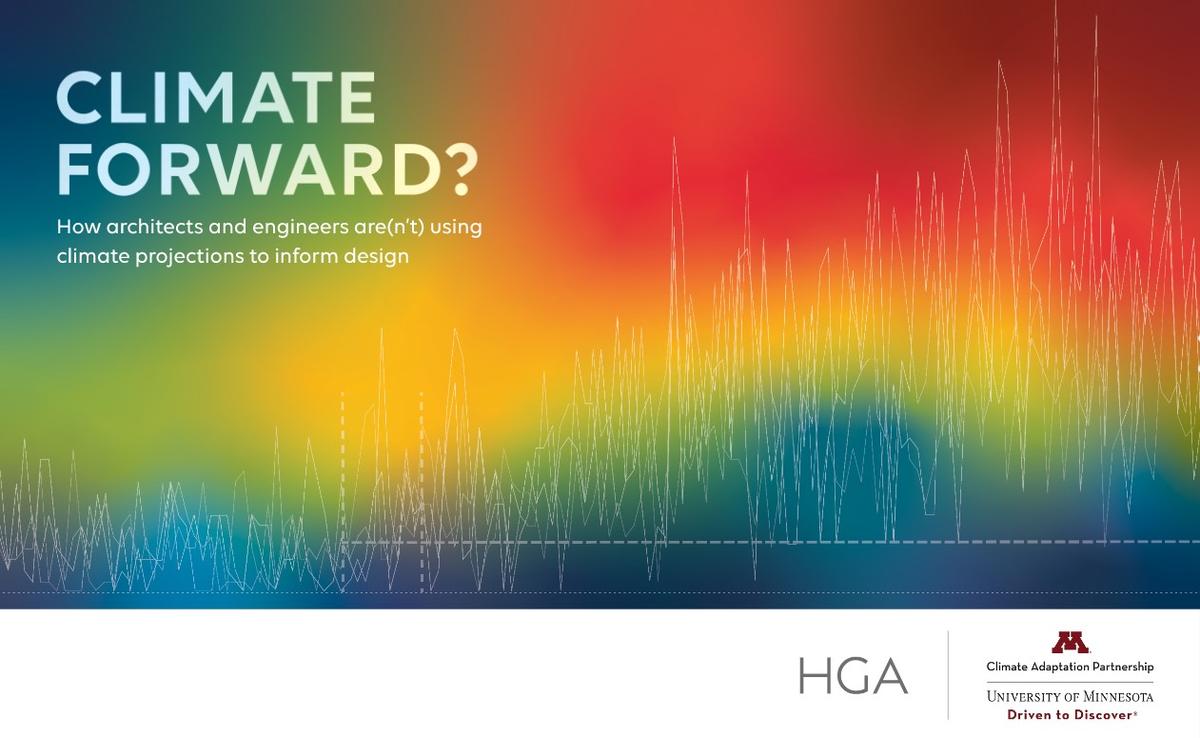Climate change impacts are growing every year, threatening lives, business continuity, and infrastructure—costing an average of $152.9 billion dollars per year in the U.S. alone (NOAA, 2022). Yet the Architecture and Engineering (A&E) industry still relies on historical weather data as a primary resource for performance analysis, system sizing, and other design decisions, as climate projection data are not available in the formats used by A&E codes, process guidelines, and software.
A new report, Climate Forward: How Climate Projections Are(n’t) Used to Inform Design, from MCAP and national interdisciplinary design firm HGA, reveals the alarming gap between the current state of A&E practice and climate science. The research makes a decisive case for the development and promotion of industry standards, mandates (including building codes), guidance and training for using climate projections in A&E applications. It also articulates the critical role for boundary organizations and climate data developers to build partnerships and capacities to bridge this gap alongside A&E professionals.
“Climate Forward?” also addresses the missed opportunity to extend the life of our buildings. Today’s sustainable design efforts focus primarily on climate change mitigation—that of reducing carbon emissions. In contrast, MCAP and HGA’s research shows how the industry should shift to design for climate change adaptation—which are a broader set of design measures that factor in the projected climate over the lifespan of the building and systems.
Check out this MPR news story discussing the report with authors Ariane Laxo and Heidi Roop.
